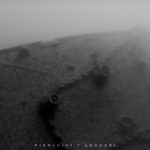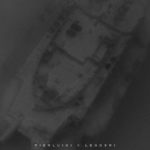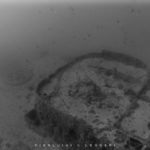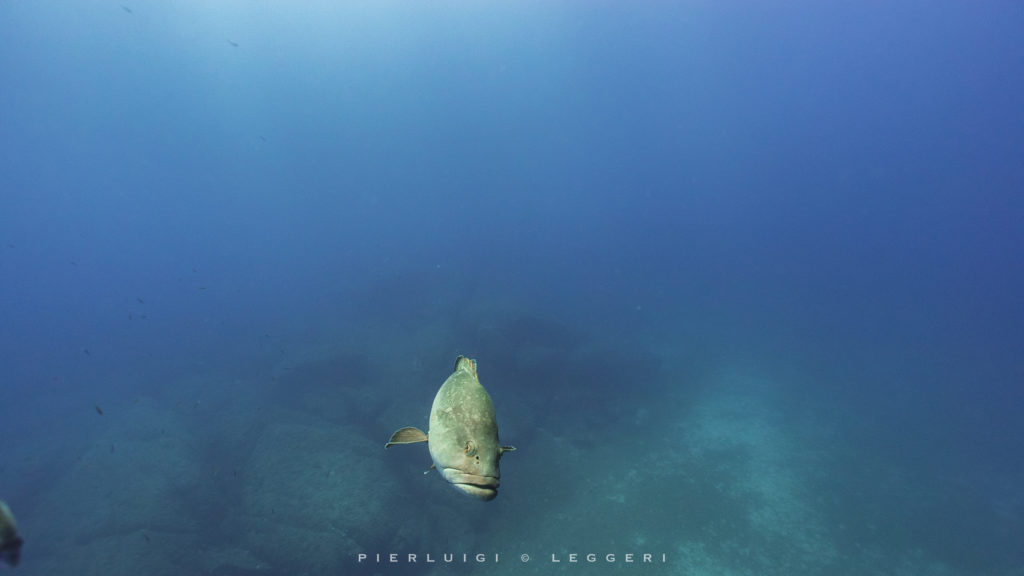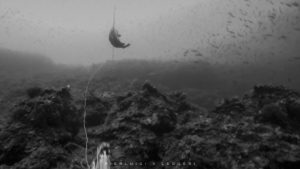Our setting is the deep south of Italy on the Ionian coast, in an unusual late October that still bears the colours of summer.
The coastline is even and flat here, creating a barren landscape — but only in appearance.
The seabed is made up of miles and miles of stretches of sand and mud, and this make-up has a strong influence on the water, making it murky and dark even though the sea suddenly becomes deep a few hundred meters further out, where the seabed is more than 70 meters below the surface.
Even further out, there are shallows no deeper than 40–50 meters from the surface that then go on to sink down to depths of hundreds of meters.
We have come here to explore, lured by the possibility of catching the greater amberjack, a species that can still be found in these waters, but, more than anything, we have come with.
the idea of hunting the great white grouper.
The shallows are home to several isolated shipwrecks that are found at various depths in the mud. The low autumn light casts a gloomy glow onto them, and they are made even more ghostly by the murkiness of the sea. These wrecks have become hunting grounds for large volumes of fish.
We have no luck on the first day: the water is far too cloudy above the wrecks, with a maximum of one to two metres of visibility. Fishing like this is almost impossible; we’d need an absolute miracle to catch a white grouper. The species is virtually the same colour as the mud and murky water of the depths it lives in. In these conditions, one could swim past right next to you without you noticing. This is well and truly a ghost hunt.
I catch a glimpse of a big one in the porthole of one of the wrecks; just a quick flash and then nothing…
I’m still fascinated by the mystery that surrounds these wrecks.
Exploring them, even just for a few moments, is always a great adventure
In the days that follow, we finally get some cleaner water (…though we are still on a muddy seabed!).
Even though the seabed is clearer today, the remaining murkiness means that I can only just about see the silhouettes of the groupers, and I cast three times in a row with no luck! I need to be slow and careful because, every time I make the slightest movement, clouds of mud rise from the seabed and hide everything. There they are, in amongst those clouds: wary and reserved, swimming like ghosts in the fog, they dig deep holes in the seabed and hide away inside, ready to spring into action the moment a predator approaches.
But little by little I begin to focus more and more, and my casts become more successful
Watching them in their environment and witnessing their natural behaviour was a spectacular sight. They speak with their movements, and it almost seems as though you can understand them and tell them how amazed you are by them.
However, we decide to move out a little onto the shallows into the open sea, where we are more likely to find clearer water.
Following some sounding to locate any interesting peaks or drops, we dive down to a promising-looking edge.
When we reach the bed 50 meters down, a group of dentex catches my attention. In this game of shadows that the poor light and the constantly murky water force us into, I carefully get ready to wait for them, but then out of the corner of my eye I see them:
the queens of this land, the greater amberjacks!
There are two of them, and they are particularly majestic. They appear a dozen or so meters from me. They’re wary, because unfortunately, they are being threatened in every way possible, even by the strange creatures who come attached to tanks to try and catch them!
It’s a shame that they don’t come close enough… and in the meantime the dentex have vanished, so we have to make a choice, and
as I have always fished as a freediver, it’s time for me to go back up and breathe.
But the seabed is full of ravines, drops and canyons that reward us with all kinds of good-sized groupers, including a lot of golden groupers. Waiting, ambushing and throwing long casts are the techniques that you need in these waters. If you use these techniques, you can experience exciting adventures without damaging the subtle balance of the wonderful ecosystem that is the Mare Nostrum.


